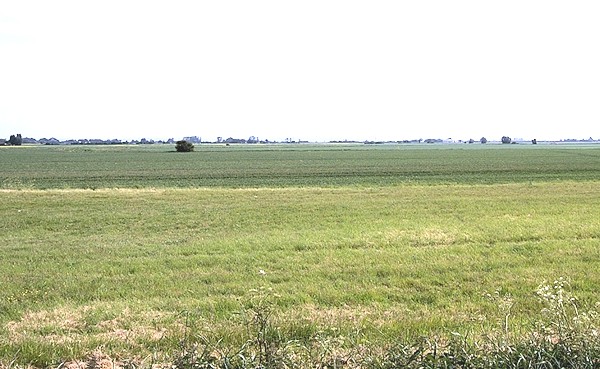Romney Marsh

![]() A Road Trip Trough Romney Marsh
A Road Trip Trough Romney Marsh
Romney Marsh looking northwards, with the old Roman coastline just in sight.
The Romney Marshes are situated in the South-East corner of England, cover an area of approximately 100 square miles and include the third largest coastal wetland in Europe. The Marsh region includes the Walland Marsh, Denge Marsh and Romney Marsh itself; the Pett Levels, East Guldeford and Brede make up the eastern edge of the Marshes.
The Marshes are bordered by the English Channel to the South while ancient sea cliffs – providing a visible backdrop to much of the Marshes – mark a northern border with the rest of England and show the original coastline at the end of the last Ice Age, approx. 10,000 years ago. Then, rivers flowed off the Weald into a marine bay. Over time islands and shingle banks formed in the bay, followed by silt and sand deposits.
About 5,000 years ago, sea-level stabilized and the area changed to a series of lagoons, sandpits and salt plains. Subsequent longshore drift created a tidal barrier while reclamation of this land, started by the Romans and carried on by Saxons and then Normans for agricultural use, together with fierce storms in the 14th Century have combined to render the Marsh into its current world important geomorphological, geographical and geological formation and natural habitat populated with rare flora, fauna and fauna.
Text courtesy of Andrew Leaning.
The economy and landscape of Romney Marsh in the 19th Century was dominated by sheep. Improved methods of pasture management and husbandry meant the marsh could sustain a stock density greater than anywhere else in the world. The Romney Marsh sheep became one of the most successful and important breeds of sheep. Their main characteristic is an ability to feed in wet situations; they are considered to be more resistant to foot rot and internal parasites than any other breed. Romney sheep have been exported globally, in particular to Australia, to where they were first exported in 1872.
In the 18th and early 19th centuries smuggling was rife in England and no more so that on the Romney Marsh.
Find out more about Romney Marsh in our history pages.

Sheep on Romney Marsh



















